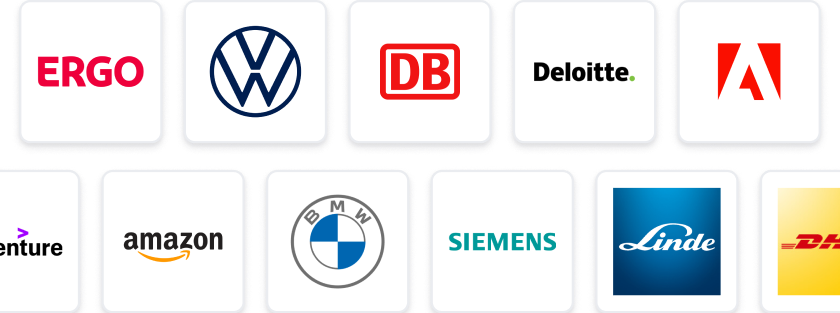At a Glance
- Tasks: Shape intuitive user experiences across web, desktop, and mobile platforms.
- Company: Join a leading B2B SaaS firm focused on high-impact design solutions.
- Benefits: Work in a dynamic environment with opportunities for mentorship and collaboration.
- Why this job: Tackle complex design challenges and elevate a mature product ecosystem.
- Qualifications: 5+ years in UI design, strong portfolio, and proficiency in design tools required.
- Other info: Office presence needed twice a week; no sponsorship available.
The predicted salary is between 48000 - 72000 £ per year.
Job Description
A leading B2B SaaS firm is seeking a Senior UI Designer to help shape intuitive, high-impact user experiences across their web, desktop, and mobile platforms. This is a great opportunity to solve complex design challenges and shape user experiences for high-profile enterprise customers.
This is an opportunity to contribute to challenging design problems and elevate the visual language of a mature product ecosystem. You’ll work closely with cross-functional teams, including other designers (including a separate UX team), product managers, and engineers in an agile, customer-centric environment.
You’ll be needed in their London office twice a week (this may also move to 3 days next year). There is no flex on this.
Sponsorship is NOT being offered.
There is also a task as part of this interview process.
THE ROLE
- Define and evolve the visual design language across platforms.
- Design and deliver pixel-perfect UI assets, iconography, and illustrations.
- Translate user needs and product goals into clean, functional interfaces.
- Contribute to and help evolve the Design System, ensuring consistency and accessibility (WCAG, WAI-ARIA).
- Develop wireframes, mockups, and high-fidelity prototypes (including motion and transitions).
- Facilitate design workshops and collaborate with teams throughout the build process.
- Mentor junior designers and advocate for high visual standards.
THE CANDIDATE
- At least 5+ years’ experience in UI/visual design for digital products.
- A strong portfolio showcasing clean, high-quality UI work from shipped products.
- Proficiency in tools like Figma, Adobe Creative Suite, Sketch, etc.
- Strong grasp of layout, typography, colour theory, and responsive design.
- Experience working with and contributing to design systems.
- Solid understanding of accessibility and human-centred design principles.
- Confident communicator who can articulate design ideas to both creative and non-creative stakeholders.
- Experience in an agile, enterprise environment is a plus.
- Motion design skills are a bonus.
If this sounds like you then please apply with your CV & PORTFOLIO asap to stand the best chance of getting an interview!
Senior UI Designer employer: Zebra People | B Corp™
Contact Detail:
Zebra People | B Corp™ Recruiting Team
StudySmarter Expert Advice 🤫
We think this is how you could land Senior UI Designer
✨Tip Number 1
Familiarise yourself with the company's existing design language and products. Understanding their current visual style will help you tailor your discussions and showcase how your design philosophy aligns with theirs during the interview.
✨Tip Number 2
Prepare to discuss specific design challenges you've faced in previous roles. Be ready to explain your thought process, the solutions you implemented, and the impact they had on user experience, as this will demonstrate your problem-solving skills.
✨Tip Number 3
Showcase your collaboration skills by preparing examples of how you've worked with cross-functional teams in the past. Highlighting your ability to communicate effectively with product managers and engineers will be crucial in this role.
✨Tip Number 4
Since the role involves mentoring junior designers, think about your leadership style and prepare examples of how you've supported or guided less experienced team members. This will illustrate your capability to elevate the team's overall design standards.
We think you need these skills to ace Senior UI Designer
Some tips for your application 🫡
Tailor Your Portfolio: Ensure your portfolio showcases your best UI work, particularly projects that demonstrate your ability to solve complex design challenges. Highlight any experience with design systems and accessibility principles, as these are key for this role.
Craft a Compelling CV: Your CV should clearly outline your 5+ years of experience in UI/visual design. Emphasise your proficiency in tools like Figma and Adobe Creative Suite, and include specific examples of how you've contributed to design systems or worked in agile environments.
Write a Strong Cover Letter: In your cover letter, express your passion for creating intuitive user experiences. Mention your experience mentoring junior designers and your ability to communicate design ideas effectively to various stakeholders. Tailor it to reflect your understanding of the company's needs.
Prepare for the Task: As part of the interview process, you'll need to complete a design task. Familiarise yourself with the company's existing products and think about how you can apply your skills to enhance their visual design language. Be ready to discuss your thought process during the interview.
How to prepare for a job interview at Zebra People | B Corp™
✨Showcase Your Portfolio
Make sure to bring a well-organised portfolio that highlights your best UI designs. Focus on projects that demonstrate your ability to solve complex design challenges and showcase your understanding of user needs.
✨Understand the Company’s Design System
Familiarise yourself with the company's existing design system and be prepared to discuss how you can contribute to its evolution. Highlight any experience you have in maintaining consistency and accessibility in design.
✨Prepare for the Task
Since there’s a task as part of the interview process, practice similar design challenges beforehand. This will help you demonstrate your problem-solving skills and your ability to create pixel-perfect UI assets under pressure.
✨Communicate Effectively
Be ready to articulate your design ideas clearly to both creative and non-creative stakeholders. Practice explaining your design choices and how they align with user needs and product goals, as this is crucial in a cross-functional team environment.
